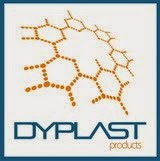
Technical Bulletin 0714
Elastomeric Insulation versus
Polyisocyanurate in
Low Temperature Applications
PURPOSE
Several of Dyplast’s prior Technical Bulletins have provided
in-depth comparisons of various insulants, including polyisocyanurate (polyiso
or PIR), polyurethane (PUR), phenolic, polystyrene (expanded EPS and extruded
XPS), cellular glass, and fiberglass - - as well as less-than-comprehensive comparisons with elastomeric and aerogel.
Now with somewhat more information becoming available from elastomeric
manufacturers and the aggressive marketing from elastomeric suppliers for colder
applications it is appropriate to dedicate a Technical Bulletin to elastomeric
insulants as compared to polyisocyanurate - - and to a much lesser extent phenolic,
and cellular glass.
QUICK PERSPECTIVES
The most basic perspective is that the overall cost of
elastomeric insulation is materially higher than polyisocyanurate, and polyiso
also has significantly better thermal insulation properties - - thus raising
the question of “why use elastomeric”:
CLICK HERE TO READ THE FULL TECHNICAL BULLETIN 0714